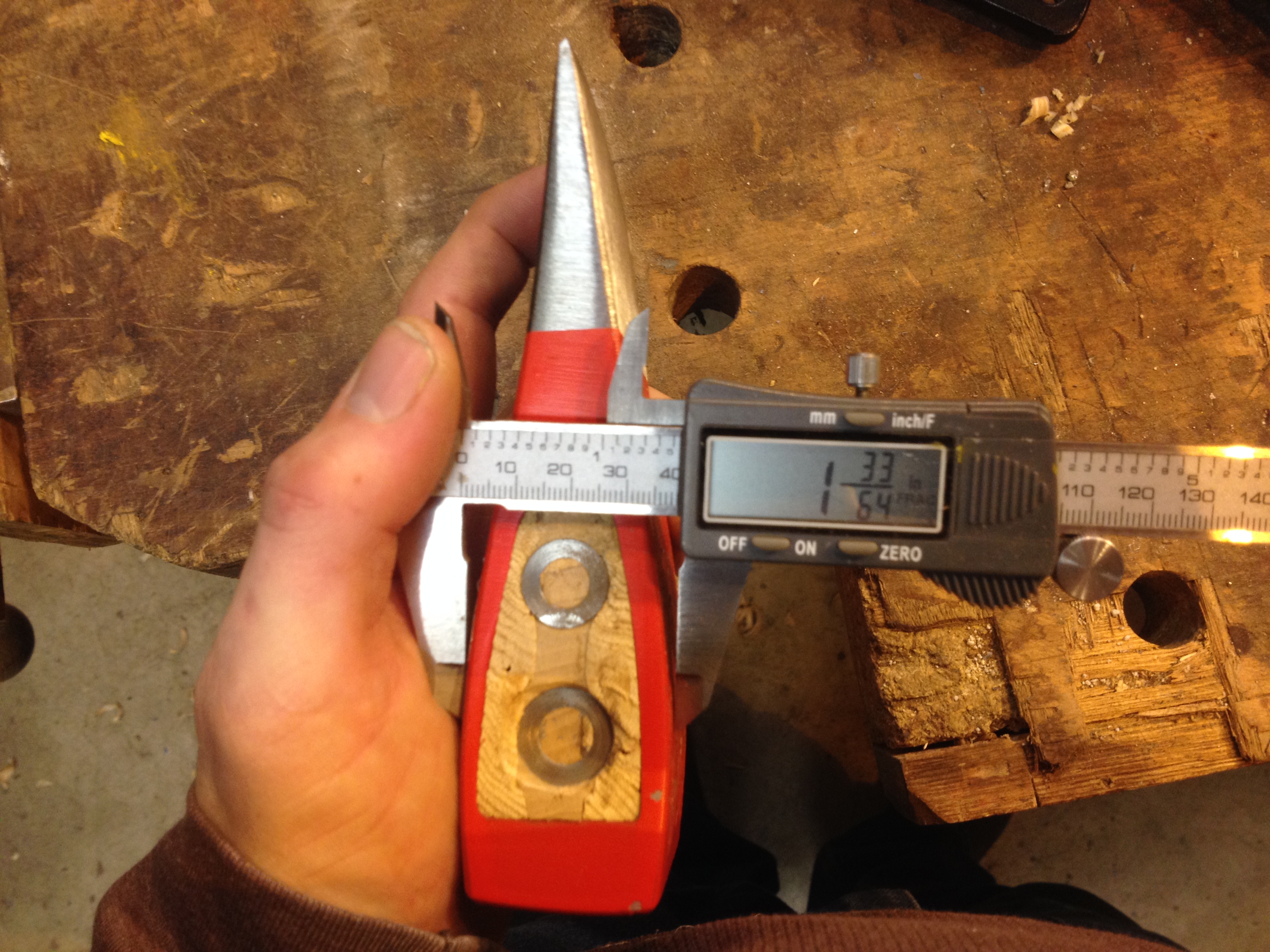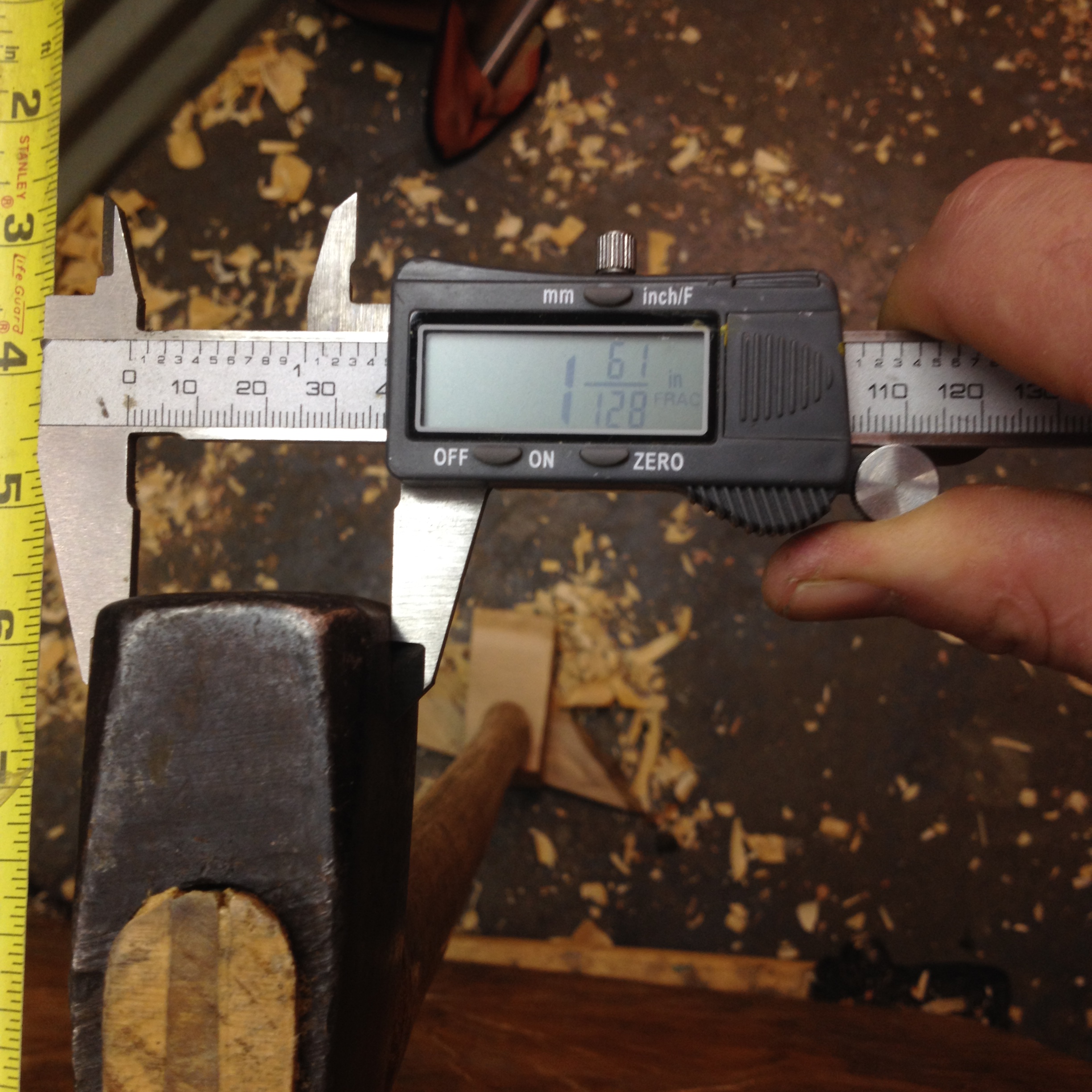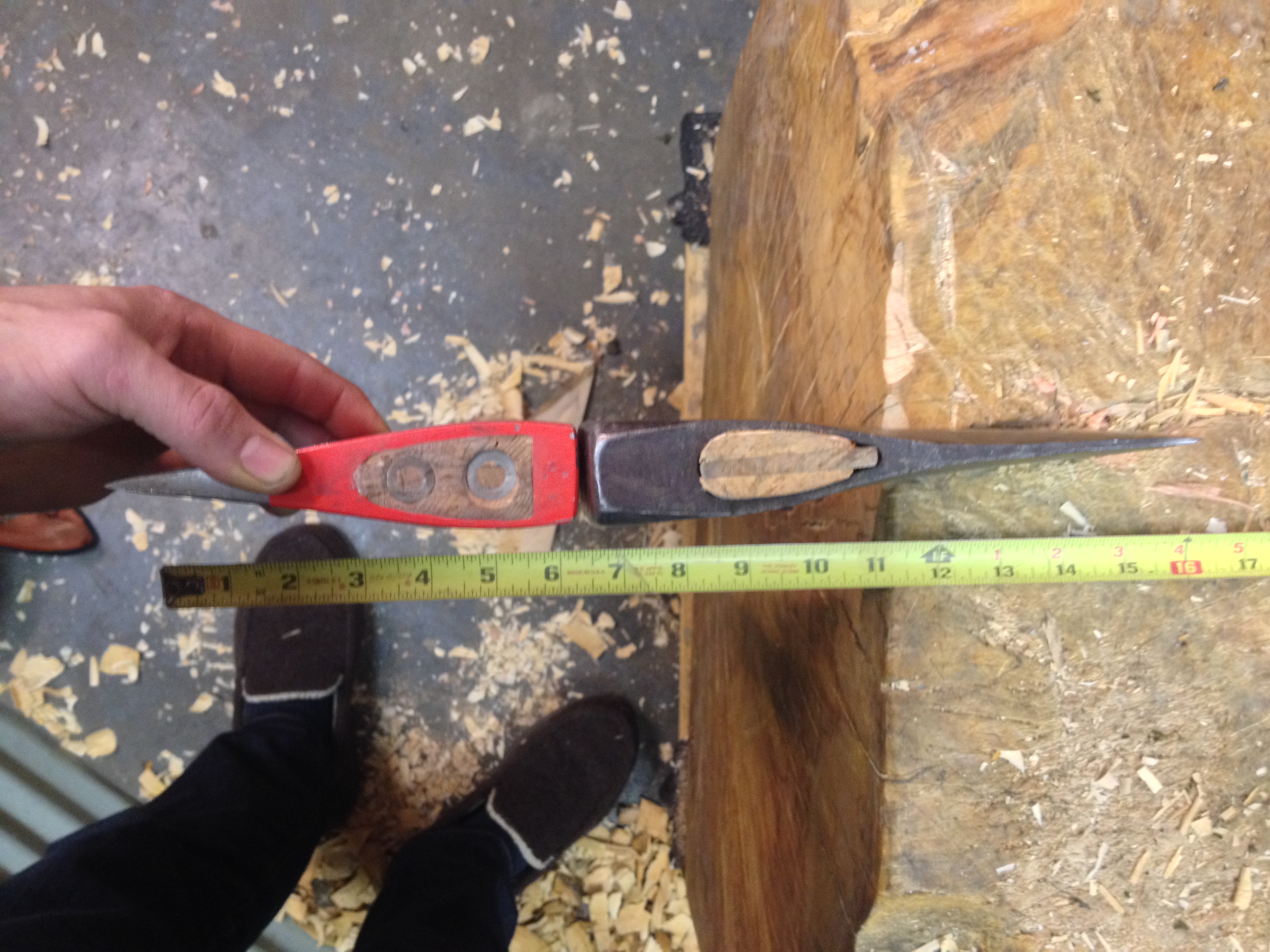- Joined
- Nov 26, 2013
- Messages
- 9
Initially this post was meant as a response in another thread about Tom Clark splitting axes http://www.bladeforums.com/forums/showthread.php/1459706-Tom-Clark-wood-splitter-and-innovator/page2 and technique but It seemed I was starting a new topic so I am doing that instead here:
Twisting technique aside (which i use when appropriate) I am fairly obsessed with splitting geometry and technique both with mauls and axes. Here I will talk about Splitting axes specifically. After lots of research I have also found, like peg, and Benjamin (fortytwoblades) alluded to(other post), that the thicker poll area is key to an effective splitting AXE.
 This is a picture of my Stihl PA 20 splittling hatchet. While this little STIHL axe (oxhead, aka ochsenkopf) is about 3lbs with a 20" handle, (i use it on a high stump) it splits more effectively Than my other 3 3.5, 4 and it even competes with my 5 lb axes depending on the wood. The reason I believe is due to 3 main things: Thickness of the axe as measured in the above photo , short bit, and slightly concave cheeks.
This is a picture of my Stihl PA 20 splittling hatchet. While this little STIHL axe (oxhead, aka ochsenkopf) is about 3lbs with a 20" handle, (i use it on a high stump) it splits more effectively Than my other 3 3.5, 4 and it even competes with my 5 lb axes depending on the wood. The reason I believe is due to 3 main things: Thickness of the axe as measured in the above photo , short bit, and slightly concave cheeks.
So my question for you Axejunkies is this: I would love it if you guys would measure the thickest section of your favorite splitting axes (no mauls) (as viewed above) and post them here. If you can include brand name and head weight all the more better. I don't know if this information has been cataloged or if it is ever even advertised. I believe it is one of the more important measurements to consider when purchasing an axe for splitting but its rarely easily accessible. I buy lots of used axes at antique stores, flea markets, ebay.. partly because I am a Junkie and partly because I feel I am doing this unofficial research. What I have found is that most 3 to 5lb axe's I are not more 1.25" thick at their widest point. Do any of you know old styles or makers that have thicker width in this area? I almost bought a True Temper rafting pattern (5lb head) and I wish i would have now as my Plumb rafting axe is not as thick as the true temper which as I recall the seller said was 1-5/8" across the widest part of the eye/poll area. My plumb 5lb rafter is less than this (not at home to measure but i will later) Peg - I actually bought my Plumb on ebay partly because of you enthusiasm about it. I share your sentiments and approach to splitting and appreciate your insights. I really like it but i don't love it so I am wondering if you could provide some dimensions specifically thickest part of the cheeks as viewed from above and how long your axe is from center of cutting edge to the poll.
Another thing that I've found to also improve the effectiveness is a shorter length in the bit; an example being with older heavily used axes that have clearly lost an inch or more of the bit length. I believe the reason that this improves splitting is that essentially it steepens the angle of wedge shape- which allows the prying of the widest part of the axe to take place sooner. Also, the thickness of any axe increases as you move back from the cutting edge allowing a wider bevel (than you might normally put on a thinner edge) that can more smoothly transition to the cheeks. I first heard this "old worn down bit theory from Peter Vido and I have noticed my axes with overly long bits( both my 5lbers) do not perform as well for splitting as I believe they could with some of these modifications.
The last point i will make is Concave Cheeks. While I am not overly fond of the fiskars simply because of the look and feel, the x series splitters do have all the the above geometry considerations integrated into their axes. From what i understand, a slightly concave grind for a few inches through the cheek area reduces the drag after the initial splitting path has been started. While i don't have any experience with with very distinct phantom bevels i imagine the principle of less drag applies here as well.
I will reiterate again What i hope this thread can become:
1. A Catalog of axe head thickness measurements with pictures (hopefully) for the betterment of our splitting arsenal and more informed purchases
2. A discussion about Splitting geometry focused on splitting axes and others personal experience and "research"
Twisting technique aside (which i use when appropriate) I am fairly obsessed with splitting geometry and technique both with mauls and axes. Here I will talk about Splitting axes specifically. After lots of research I have also found, like peg, and Benjamin (fortytwoblades) alluded to(other post), that the thicker poll area is key to an effective splitting AXE.

So my question for you Axejunkies is this: I would love it if you guys would measure the thickest section of your favorite splitting axes (no mauls) (as viewed above) and post them here. If you can include brand name and head weight all the more better. I don't know if this information has been cataloged or if it is ever even advertised. I believe it is one of the more important measurements to consider when purchasing an axe for splitting but its rarely easily accessible. I buy lots of used axes at antique stores, flea markets, ebay.. partly because I am a Junkie and partly because I feel I am doing this unofficial research. What I have found is that most 3 to 5lb axe's I are not more 1.25" thick at their widest point. Do any of you know old styles or makers that have thicker width in this area? I almost bought a True Temper rafting pattern (5lb head) and I wish i would have now as my Plumb rafting axe is not as thick as the true temper which as I recall the seller said was 1-5/8" across the widest part of the eye/poll area. My plumb 5lb rafter is less than this (not at home to measure but i will later) Peg - I actually bought my Plumb on ebay partly because of you enthusiasm about it. I share your sentiments and approach to splitting and appreciate your insights. I really like it but i don't love it so I am wondering if you could provide some dimensions specifically thickest part of the cheeks as viewed from above and how long your axe is from center of cutting edge to the poll.
Another thing that I've found to also improve the effectiveness is a shorter length in the bit; an example being with older heavily used axes that have clearly lost an inch or more of the bit length. I believe the reason that this improves splitting is that essentially it steepens the angle of wedge shape- which allows the prying of the widest part of the axe to take place sooner. Also, the thickness of any axe increases as you move back from the cutting edge allowing a wider bevel (than you might normally put on a thinner edge) that can more smoothly transition to the cheeks. I first heard this "old worn down bit theory from Peter Vido and I have noticed my axes with overly long bits( both my 5lbers) do not perform as well for splitting as I believe they could with some of these modifications.
The last point i will make is Concave Cheeks. While I am not overly fond of the fiskars simply because of the look and feel, the x series splitters do have all the the above geometry considerations integrated into their axes. From what i understand, a slightly concave grind for a few inches through the cheek area reduces the drag after the initial splitting path has been started. While i don't have any experience with with very distinct phantom bevels i imagine the principle of less drag applies here as well.
I will reiterate again What i hope this thread can become:
1. A Catalog of axe head thickness measurements with pictures (hopefully) for the betterment of our splitting arsenal and more informed purchases
2. A discussion about Splitting geometry focused on splitting axes and others personal experience and "research"
Last edited:



